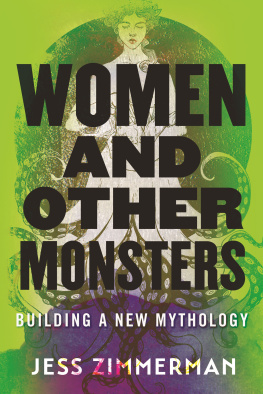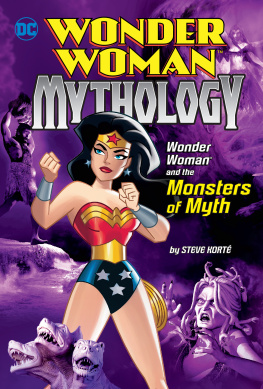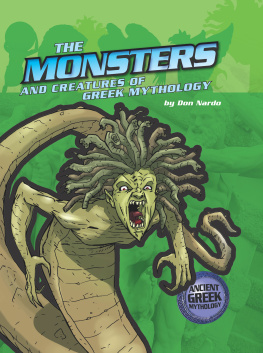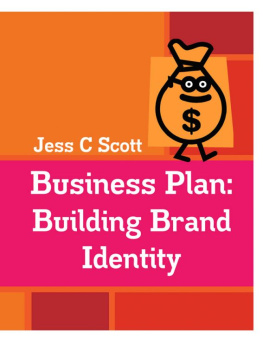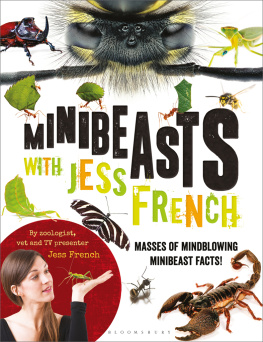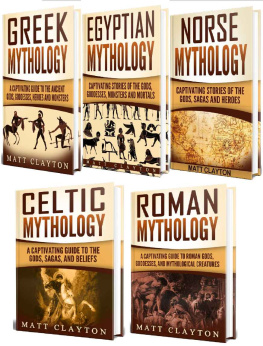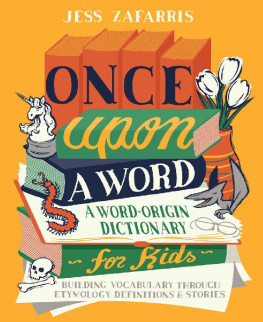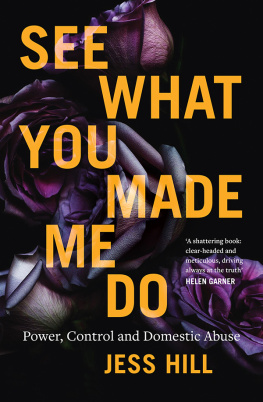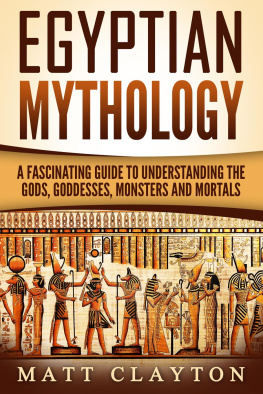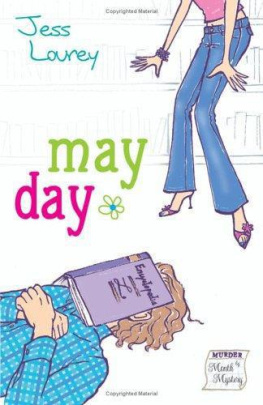Jess Zimmerman - Women and Other Monsters: Building a New Mythology
Here you can read online Jess Zimmerman - Women and Other Monsters: Building a New Mythology full text of the book (entire story) in english for free. Download pdf and epub, get meaning, cover and reviews about this ebook. year: 2021, publisher: Beacon Press, genre: Romance novel. Description of the work, (preface) as well as reviews are available. Best literature library LitArk.com created for fans of good reading and offers a wide selection of genres:
Romance novel
Science fiction
Adventure
Detective
Science
History
Home and family
Prose
Art
Politics
Computer
Non-fiction
Religion
Business
Children
Humor
Choose a favorite category and find really read worthwhile books. Enjoy immersion in the world of imagination, feel the emotions of the characters or learn something new for yourself, make an fascinating discovery.
- Book:Women and Other Monsters: Building a New Mythology
- Author:
- Publisher:Beacon Press
- Genre:
- Year:2021
- Rating:5 / 5
- Favourites:Add to favourites
- Your mark:
- 100
- 1
- 2
- 3
- 4
- 5
Women and Other Monsters: Building a New Mythology: summary, description and annotation
We offer to read an annotation, description, summary or preface (depends on what the author of the book "Women and Other Monsters: Building a New Mythology" wrote himself). If you haven't found the necessary information about the book — write in the comments, we will try to find it.
Women and Other Monsters: Building a New Mythology — read online for free the complete book (whole text) full work
Below is the text of the book, divided by pages. System saving the place of the last page read, allows you to conveniently read the book "Women and Other Monsters: Building a New Mythology" online for free, without having to search again every time where you left off. Put a bookmark, and you can go to the page where you finished reading at any time.
Font size:
Interval:
Bookmark:


For Grammy
T HIS BOOK IS CALLEDWomen and Other Monsters. Well get into what monsters meanswell spend the whole book getting into that, reallybut first, a quick note on the word women. I use the term in its broadest possible sense, encompassing people who identify as women (regardless of assigned gender at birth) and people who have at some point been seen and treated as women (regardless of current gender). At issue is less the experience of feeling like a woman or knowing yourself as a woman, whatever that may mean to you, but of facing the assumptions and expectations and limitations placed on women under patriarchy.
If you were raised and socialized as a girl, if the people around you tried to prepare you from an early age for life as a woman, this book is for you, even if you turned out not to be a woman after all. If your body or presentation causes people to react to you as a woman, or to react to you in ways that are influenced by the cultural opinion of women, this book is for youalthough trans women and nonbinary people face additional expectations, restrictions, and oppressions that I may not always cover. And honestly, if you were socialized and are responded to and identify as a man, you may find something here for you too. One of the consequences of living in a profoundly misogynistic society is that its considered insulting to men to be compared to women. Even men who have always been seen as men may have been told their anger or sadness or sexuality was somehow too feminine. If thats you, although this book isnt written with you in mind, it isnt intended to shut you out.
Im not a classicist, and my intention here isnt to offer the most authentic interpretation of these monsters. In some (probably most) cases, their metaphorical weight in the book will be different from the role they played in ancient Greek society. Here, their image, as it survives today, is being used as a framework for discussing womens current-day cultural role. The list of works cited and consulted include a few suggestions if you want to know what the original chroniclers or the scholars have to say.
Finally, a lot has been written on the use of we in essays. Its true it can be used to make sweeping statements sound grand instead of simplistic. I know not everyone will feel like a part of every we. But its always been an important pronoun to me, both in writing and editing: an acknowledgment that the greater work is a group project. Theres no writing without a reader, so you and I are automatically a weand on a personal level, Ive always tried to write my way towards an understanding of what it means to be a human, in this culture, in this time. I hope that it doesnt feel like false solidarity, and that if you feel excluded from one we, the next one will feel familiar to you.
T HE FIRST THING you saw when entering the Dangerous Beauty exhibit at the Metropolitan Museum of Art was a vintage dress from Versaces 19921993 Miss S&M collection. Straps of quilted leather crisscrossed the throat and dcolletage of a headless mannequin, each strap adorned with a dollar-sized brassy coin bearing the head of a howling Gorgon, a play on Versaces usual logo of a placid Medusa face. The overall effect was oddly militaristic, a sort of four-star dominatrix look.
The exhibit, subtitled Medusa in Classical Art, was tiny, tucked away in a single room in the mezzanine of the Greek and Roman art collection, next to the study gallery. So perhaps the dress was there to grab the attention of tourists who might accidentally have wandered up from the floor below, a broad indoor courtyard across which a young Hercules, lion-skin coat held meaningfully over his arm, stares impatiently at a statue of his older self. This is often the purpose, after all, of womens bodies and the clothing that adorns them, especially clothing that highlights the bodys constraints. Clothing like this exists to catch the eye.
In this case, though, gawkers lured by Miss S&M were deposited into a room full of artifacts depicting not only Medusa but a coven of other female creatures of antiquity. Gorgon facesboth horrible ancient ones, with tusks and beards, and later ones, whose placid classical symmetry is broken only by a few demure snakes at the templesstared out from roof tiles, armor, cups, and cameos. A piece of pottery showed Scylla with her snake legs splayed, a pack of dog heads lunging out of her crotch. Sirens perched their bird bodies on plates and mirrors. On the side of one shallow goblet, a Sphinx was painted in loving miniature, crouching over a male victim who appeared to plead for his life. Chasing after the female torso in her chic bondage, in other words, landed you in a nest of monsters.
The sixty pieces in the exhibit were intended to track the way Medusa and her counterparts became subject, despite their monstrousness, to principles of beauty. A gold pendant with a Gorgons face from 450 BCE showed a grimacing creature with sharp teeth, a protruding tongue, a creased brow, a knobby chin. An exquisite nineteenth-century cameo, displayed in the same case, showed a perfect, precise neoclassical profilewhich is to say, she looked a bit like Graham Chapman, but that was the style at the time. Apart from a coil of snake at the crown of her head, like a fascinator, and another knotted scarflike beneath her chin, she had no visible markers of monstrousness. Youd easily mistake her for a proper young lady with Bohemian hair and odd taste in accessoriesthe youngest Downton Abbey daughter, maybe. A Siren on one oil vessel from the sixth century BCE sported a full beard, though Sirens were generally coded as female, and had no arms; its head sat atop an awkward, turkey-like bird body. Catty-corner was a 1910 French woodcut in which a Siren, despite having developed bear arms and a fish tail to go with her wings, was still depicted as a beautiful bare-breasted feminine figure with a crown of flowing hair. Creatures conceived as repulsive were gradually reimagined as appealing, even seductiveat least on the surface. The monstrosity remains, but its no longer visible.
In a society centered on the male citizen, the feminization of monsters served to demonize women, writes curator Kiki Karoglou in an accompanying bulletin. The later monsters dont just look more beautiful and more feminine; they look more human, underscoring the idea that monstrousness is somehow the human womans natural condition. As monsters became more pleasing to the eye, they were defangedbeauty being equated, in classical Greece, with moral goodnessand, paradoxically, made more dangerous. A Medusa with tusks, whiskers, and a grotesque distended tongue could be easily pegged as a threat; a human-looking Medusa could fly under the radar, until you tried to brush her hair. The resulting girl-faced beasts, read the exhibition text, foreshadow the conceit of the seductive but threatening female that emerges in the late nineteenth century in reaction to womens empowerment. When a feminine face might belong to a secret Gorgon, any woman could be a monster. Perhaps every woman was.
This is one of the legacies weve inherited from the classical era, which underpins so much of what Westerners see as culture and civilization: a suspicion of women in general, a feeling that every one of them may have claws and tails if you look below the waterline. The monsters massed together in this little room at the Met represented a series of cautionary tales. Women may look harmless on the face, they said, but look at their snake hair and dog crotches and claws. Look at them crouched over a male victim, ready to bite. Beware their ambition, their ugliness, their insatiable hunger, their ferocious rage.
Font size:
Interval:
Bookmark:
Similar books «Women and Other Monsters: Building a New Mythology»
Look at similar books to Women and Other Monsters: Building a New Mythology. We have selected literature similar in name and meaning in the hope of providing readers with more options to find new, interesting, not yet read works.
Discussion, reviews of the book Women and Other Monsters: Building a New Mythology and just readers' own opinions. Leave your comments, write what you think about the work, its meaning or the main characters. Specify what exactly you liked and what you didn't like, and why you think so.

